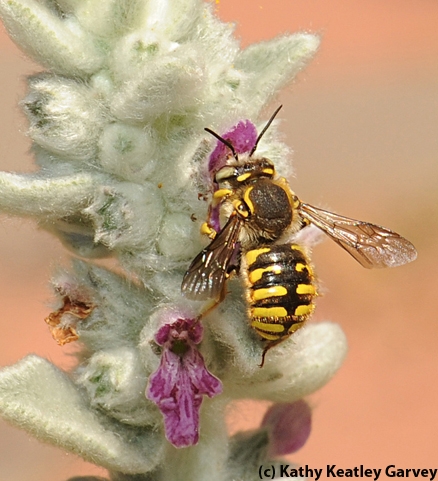
The wool carder bees (Anthidium manicatum), so named because the females collect or "card" plant fuzz for their nests, move quickly. The males, more aggressive and very territorial, move even faster.
The wool carder bee is an Old World bee introduced into the United States (New York) in 1963. It was first discovered in California (Sunnyvale) in 2007.
Today we spotted one in our Vacaville yard that didn't seem to be in much of a hurry.
In fact, it sidled up to the catmint (Nepeta) and appeared to be having a conversation. No, not with an empty chair. With a mint leaf.
Girl bee?
No, said native pollinator specialist Robbin Thorp, emeritus professor of entomology at the University of California, Davis, and one of the instructors at the annual Bee Course at the Southwestern Research Station, Portal, Ariz.; this year's course takes place Sept. 10-20.)
"This one is a boy bee," Thorp said. "Note the prominent golden fringe hairs along the side of the abdomen and the edge of the tooth-like processes at the tip of the abdomen. Also the lower part of the face (the clypeus) is mostly yellow."
So there you have it, a boy bee!
I'm still wondering why he wasn't body-slamming the honey bees and engaging in other aggressive and territorial escapades.
Attached Images:

